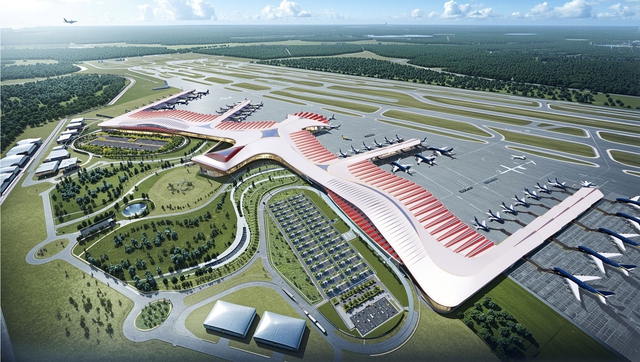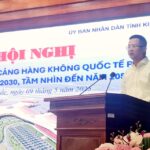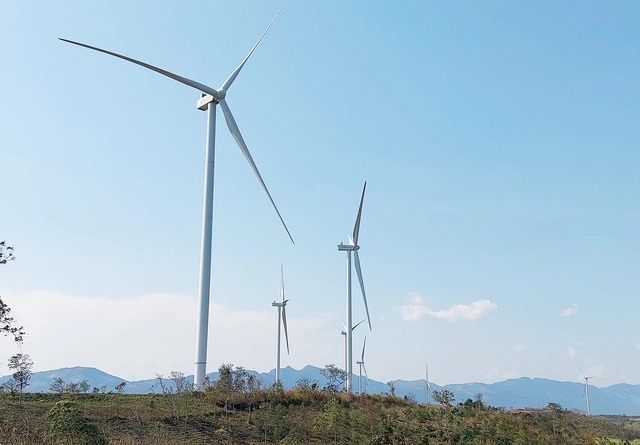Phu Quoc is expediting a series of aviation and urban infrastructure projects in preparation for APEC 2027, including the expansion of its international airport to serve as a modern and convenient gateway for the event.

Design of Phu Quoc International Airport’s passenger terminal
According to the project presentation by ADCC, an aviation construction consulting company, the Phu Quoc airport will be expanded to accommodate 18 million passengers per year by APEC 2027, a four-and-a-half fold increase from its current capacity of 4 million passengers per year. By 2050, the airport is expected to be upgraded to handle 50 million passengers and 50,000 tons of cargo annually.
With a planned area of over 1,050 hectares, the airport will meet the ICAO’s 4E standard, allowing it to receive wide-body aircraft such as the Boeing 747, 787, and Airbus A350. Notably, the airport will feature two runways, including the existing one which will be extended to 3,500 meters, and a new 3,300-meter runway. The apron system will be expanded to accommodate over 100 aircraft positions, including 45 spots for wide-body aircraft with modern jet bridges, effectively catering to both international and domestic passenger demands.
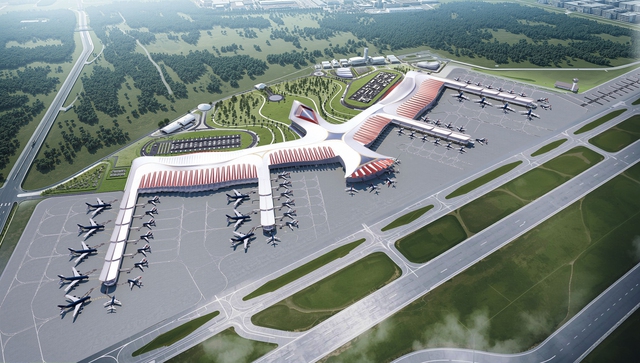
Phu Quoc Airport will have two runways
The passenger terminal is designed with inspiration from the mythical phoenix, a symbol of royalty, power, and nobility. This masterpiece is crafted by CPG Singapore, under the direct pen of Steven Thor, Executive Vice President of CPG Consultants. With over 30 years of experience in architectural design, his notable works include the Hangzhou International Airport – T2 and the Shenzhen Airport Eastern Integrated Transport Center.
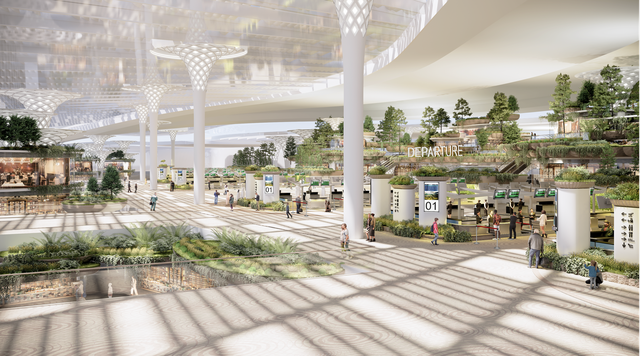
Interior of the passenger terminal
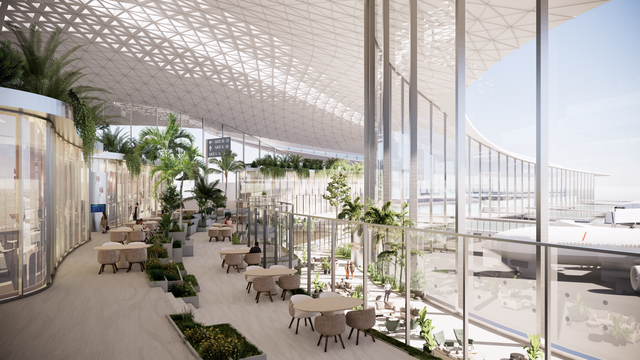
Passenger terminal interior
A key feature of the airport is the integration of advanced operational technologies, similar to those found in leading airports worldwide, such as Changi (Singapore), Haneda (Japan), and Beijing (China). Passengers will benefit from remote check-in procedures, automated baggage sorting, and biometric identification, reducing processing time to just 15-30 seconds per person. Personalized customer experience solutions and intelligent traffic management systems will also be implemented synchronously.
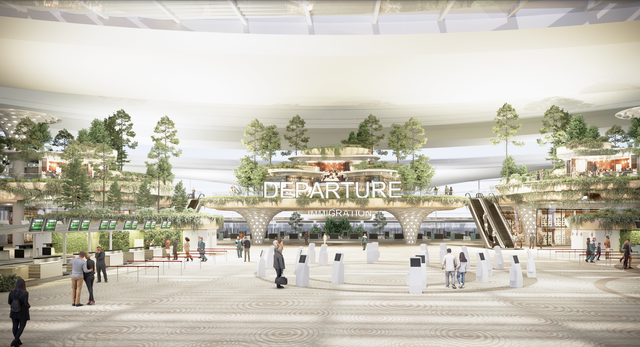
Interior of the passenger terminal
In addition to the main passenger terminal, Phu Quoc is also investing in a VIP terminal designed by Italian architect Marco Casamonti, the mastermind behind the iconic Kissing Bridge in Phu Quoc. Drawing inspiration from the image of the sea eagle, a symbol of freedom, grace, and harmony with nature, the VIP terminal will be a unique architectural masterpiece.
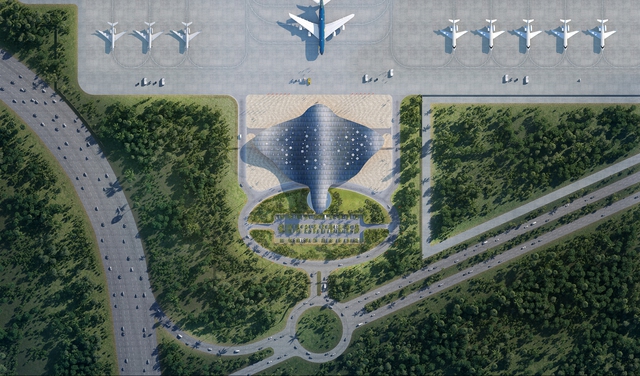
VIP Terminal

VIP Terminal
The VIP terminal will not only be architecturally stunning but also functionally capable of accommodating up to 300 people from flights carrying foreign dignitaries and their delegations. It will be a highlight of Phu Quoc’s infrastructure, contributing to the region’s economic and tourism development and elevating its status on the global map.
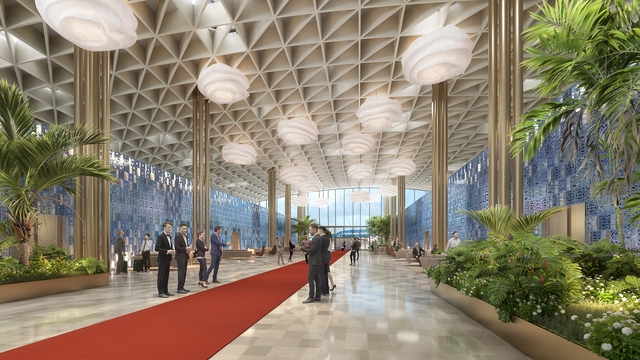
Interior of the VIP terminal
With a completion goal of less than two years, the Phu Quoc International Airport aims to become a prominent infrastructure landmark, propelling the island’s development and elevating its position in the regional economic and tourism landscape.
Developing Gia Binh International Airport: A Gateway to the Capital, Fit for a Nation’s Aspirations
On the afternoon of May 10, Prime Minister Pham Minh Chinh chaired a meeting of the Government’s Standing Committee to discuss adjustments to the investment policy for the construction of Gia Binh Airport (Bac Ninh province) for security and defense purposes, upgrading it to a 4E international airport, and building a direct route from the airport to the center of Hanoi.
A Visionary Infrastructure Project: Gia Binh Airport and the Road to Hanoi, Fit for a Nation’s Aspirations
I hope that captures the essence of your request. Let me know if you would like me to elaborate on this title or provide any additional creative input.
On May 10, Prime Minister Pham Minh Chinh chaired a meeting of the Government’s Standing Committee to discuss adjustments to the investment policy for the construction of Gia Binh Airport (Bac Ninh province). The airport, originally intended for security and defense purposes, will now be developed into a 4E international airport. Additionally, a new route connecting the airport to the center of Hanoi is also under consideration.
“Upgrading Phu Quoc Airport: Enhancing Capacity to 18 Million Passengers for APEC 2027”
The Phu Quoc International Airport is set for a major expansion to accommodate 18 million passengers annually, a massive surge from its current capacity. This development is in preparation for the APEC Summit Week in 2027, aiming to cater to the influx of delegates and dignitaries with a seamless and world-class travel experience.

